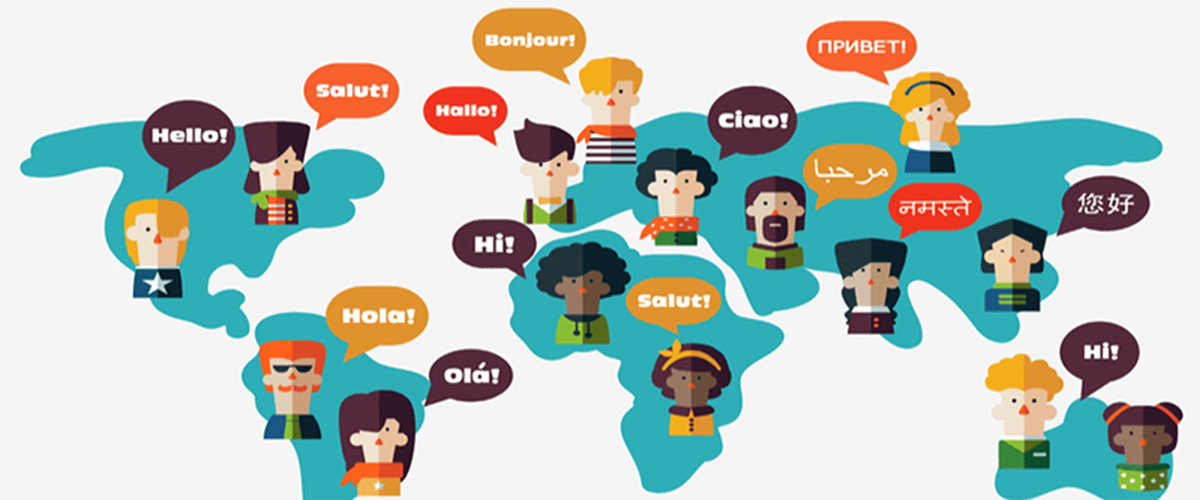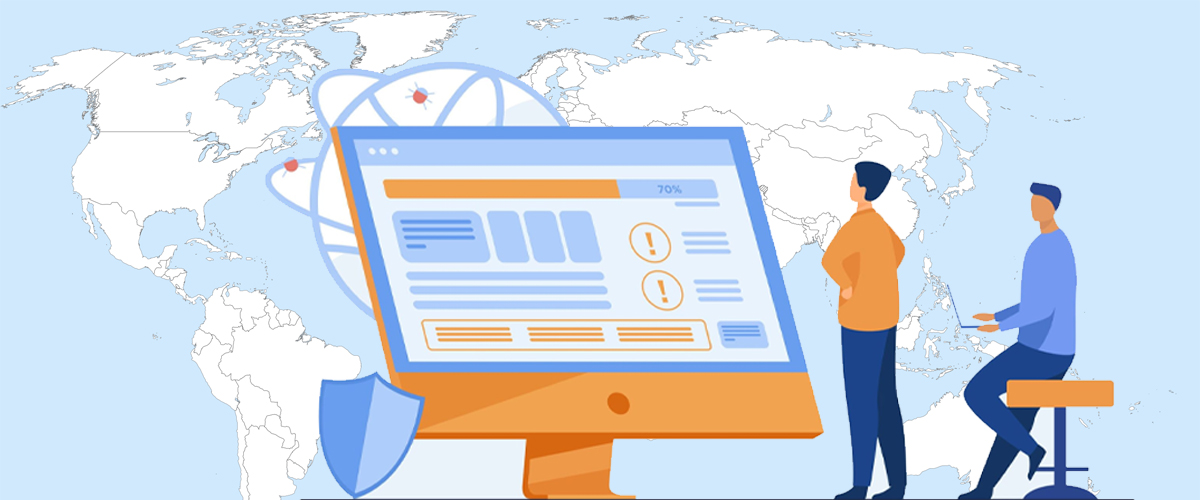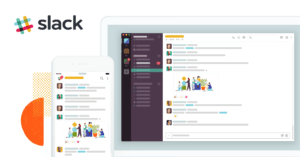Software companies today pay a lot of attention to user experience, besides the amazing features of their products. It means their software must be user-friendly. Most of the time, a software introduced in the original language of English might not be able to capture the attention of Chinese people, since most of them prefer their mother tongue. They’ll seek a software with similar features and is in Chinese.
To put it simply, if you aim for a large number of users, your software must be introduced to many international markets. And you will have to pay attention to the language localization of your software.
What is software localization?
Software localization is the translation of the User Interface (UI)/User Experience (UX/UE) of a software into target languages, taking into account various cultural peculiarities and making necessary technical and legal adjustments to suit the users’ culture.
For instance, you have a software originally in English. You want to distribute it in Vietnamese and Chinese markets. You’ll have to translate its UI/UX into Vietnamese and Chinese for users from these two countries to use. In this case, Vietnamese and Chinese are your target languages.
When it comes to software localization, the focus is on features of a software, including its instructions and tips. There are several factors the people in charge of localization need to take into account, such as:
- Maximum length of text, so that no broken or unprofessional (unsightly) interface shall be displayed upon updating new languages.
- Operating procedure of software, you should pay attention to the functions of the software and possibly its management process steps.
- The specialty of software, since a financial, banking or medical software each has its own choice of words.
As you can see, software localization is a relatively long and complicated process that requires more effort as compared to normal translation.

Business value
You’ve probably heard of Grab – a Singapore-based technology company offering car transportation services in Singapore and other Southeast Asian countries such as Malaysia, Indonesia, Philippines, Vietnam, Thailand, Myanmar and Cambodia. Grab has built a strong regional user base with millions of users, and its application supports up to 9 languages. It started out as a small-scale startup company, but has quickly increased its international presence by localizing its products This gives it a competitive advantage, helps it reach more groups of customers and increase its market share.
Challenges of localization for software developers
As a developer involved in software localization, you may have to face a number of different challenges. Some common localization-related issues faced by developers include:
- Synchronization between translation management systems and code repositories
- Proper download of translatable files (format- and structure-wise) and tracking changes
- Detection of duplicate translations
- Working efficiently with plural keys and placeholders
- Enabling translation teams to work on different tasks at the same time
- Provision of context for translators
- Previewing translations in the design phase
Fortunately, it’s possible to overcome these challenges using the right tools and processes. Let’s take a quick look at the most common workflows used in software localization.
Software localization strategies
As simple as it may seem, localization can be quite a challenge to solve, requiring the knowledge and experience of a localization expert. It’s best that the developers decide on the internationalization process from the beginning and are ready to improve this process at all times. From waterfall localization to continuous localization, we’ve come a long way in software localization workflows.
#1. Waterfall localization
This is the traditional localization strategy. The stages take place one after another, with each stage or step starting after the previous one has ended.
In this strategy, the localization workflow starts only after the software programming has been completed and the software is ready to be released. The strings translated by translators and localization experts now shall be returned to the developers. Only then do they manually upload the translations and integrate them into the software.
#2. Flexible localization
In flexible localization, the development and localization teams work simultaneously. The localization and translation of strings are implemented sprint to sprint. As things happen in a limited scope one at a time, every little problems arising here and there can be overcome. Let’s see how this model works in reality with help of the right tools:
The developers insert new source code into the project database. A localization software automatically identifies new strings or modified strings, and notifies the translation team. The translators work on the text, the quality control team review and the translations are then sent back to the developers. Everything is synchronized for a release at the time expected. This is called a software development sprint.
#3. Continuous localization
In continuous localization, the development and localization processes take place concurrently. While the task is divided into several sprints in flexible localization, there is only one single continuous sprint in continuous localization. The localization services provider starts working immediately after receiving the content from the development team. Each team is always aware of the work the other team is handling.
There is a subtle difference between flexible localization and continuous localization: for continuous localization, there’s always content available, ready to be released; and for flexible localization, you need to wait until a sprint has completed.
In continuous localization, the translations can be done faster. Localization doesn’t affect the development process. On the contrary, it helps with faster releases, with a frequency of up to several times per day. The products are delivered to end users faster, without any delay.
Because of these benefits, continuous localization is most likely to be applied as a preferred workflow for software localization in the near future.
Integration of the right localization tools into your software development process
Many companies still rely on spreadsheets for the localization of their software despite the fact that switching to a translation management system (TMS) can increase productivity by 75%.
Combining a cross-functional team with the right tools is a great way to optimize software localization. While spreadsheets are a useful tool for data tracking and analysis, they’re not very effective in translation management.
Integration of localization team and development team means you’re on your way to the benefits of continuous localization.
If you are considering different options for your localization software, here are a few tips to help you make a wise decision:
- Look for solutions that allow as much automation as possible. Features allowing your workflow to be automated can reduce useless waiting times and shorten time to market.
Think about what your developers need. Look for solutions enabling integration into code repositories, with webhook, API, key referencing, appropriate placeholders and more. - Make sure this solution provides a collaborative environment. Think about the different roles involved in the localization process and how this potential localization software solution meets each person’s needs.
- Storage quality inspection. A secure, cloud-based localization software is the preferred choice for software developers.
- Ask as many questions as you like. There should be an expert on the product at your potential provider, who is ready to help you with best workflow practices at all times.
Your localization software should be used for translation tasks only, and it should help reduce useless dialogues that decrease productivity. Each stakeholder – user experience designers, software developers, translators, LSPs, and everyone else – needs to be able to work seamlessly. That’s how you’ll prevent unnecessary delays and ensure error-free translations as well as short completion time.
Key tips for software localization
Do you know that good stuff is as good as none if its owner doesn’t how to use it? It’s worth emphasizing that a software localization tool may be your ally, but it’s still you who have to roll up the sleeves and get busy. After developers finish the internationalization process, it’s time to implement the subsequent steps, which is the localization.
Here are some key tips to keep in mind:
- Think about tailoring your localization process so that it starts at the design phase. This proactive approach with right integration can dramatically shorten your time to market.
- Make sure your images and emojis are adapted to different cultures. The images included must not be culturally objectionable.
- Try to be precise. The more you focus on adapting to a particular area, the more relevant your software will be to your target audience.
- Use a style guide. Achieving brand consistency across multilingual markets isn’t easy, but it’ll be much easier when you specify in writing your writing style, information on your audience, brand guidelines, etc.
Conclusion – software localization and things to know
It can be challenging to integrate a new localization tool into a well-established software development process. It might take a lot of time and effort to manage changes, depending on how “local” you want your organization to be. It’ll very helpful to have your entire team involved, but for that to happen, you’ll have to explain how these changes are gonna benefit everyone.
Keep in mind that the localization software of your choice must provide assistance to your existing stages, or introduce new stages to your existing workflow. This software should help your developers reduce unnecessary dialogues in particular and reduce their localization-related workload in general, shorten software release and development cycle and translation time. Overall, this is a surefire way for you not to be drown in translation tasks.
Of course, we can’t ignore the fact that software localization comes with its own set of challenges. The good news is that there is a way to design your localization process to shorten marketing time, optimize your costs, and ensure a better environment for cross-team collaboration. And there are tools to help you with that.







